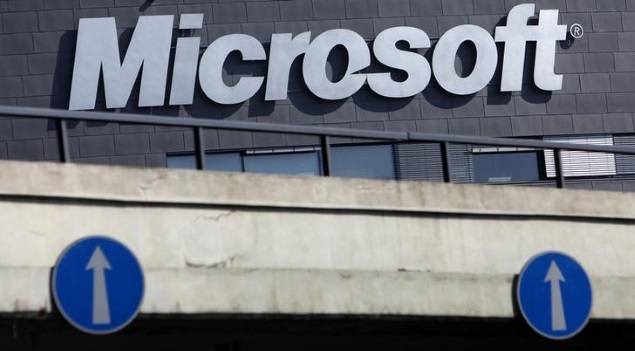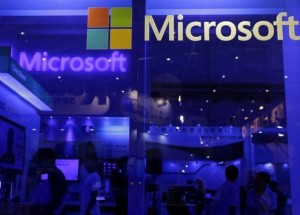Microsoft’s strategic shift to creating apps and services for rival operating systems was born from the hard realization that Windows’ share of the total device market was in the middle of a three-year slump, according to new forecasts Thursday by research firm Gartner.
Not until 2017 will Windows’ share return to 2013 levels, Gartner said.
In 2015, Windows’ share of the operating systems on all devices — smartphones, tablets, PCs, ultra-light form factors and PC-tablet hybrids — will slip to 13.3%, down from 13.6% last year and off from a 14% share in 2013, Gartner said in revised estimates provided to Computerworld.
Windows’ 2015 share of 13.3% was based on the predicted shipment of 330.5 million Windows-powered devices, which if accurate, would represent a year-over-year increase of less than 1%.
For 2016, Gartner projected Windows’ share to climb to 13.8% on the back of 358.3 million devices. Not until 2017, when Windows’ share reaches 14.4%, will the OS top 2013’s 14%.
That 14% benchmark had some significance to Microsoft last year, although the company has not mentioned it since.
In July 2014, Kevin Turner, Microsoft’s chief operating officer, acknowledged the reality his company faced, pointing out that its operating systems powered a small fraction of all devices worldwide. Even so, he argued that Microsoft was making moves that would boost its share. “We want to go from 14% [device share] to 18%, from 18% to 25%, from 25% to 30%. That’s the beauty of this model … [the opportunity] is much bigger than anything we’ve had in the past.”
If Gartner’s latest forecast is anywhere close to correct, Microsoft will instead struggle to hold onto the device share it owned two years ago, and will have virtually no mid-term shot at turning it into even the lowest number Turner set as an interim goal.
Microsoft’s problems have been well documented. Traditional PC shipments will continue to decline: Gartner forecast drops in shipments of 9% this year, 4% in 2015 and 3% in 2017. All the growth in what could generously be called “PCs” will be in what the research firm calls “ultramobile premium” systems — top-priced lightweight laptops and premium 2-in-1s like Microsoft’s Surface Pro — which will post increases of 46% in 2015, 39% in 2015 and 23% in 2017. But even with their addition, gains for the broader PC category will only start in 2016, and then amount to just 4%.
Windows also has flailed at smartphones and made only small inroads into the suddenly-slow-growth tablet market.
Only Microsoft knows its own projections — and it obviously won’t share those outside the company — but if they are in the same range as Gartner’s, the company had to see the writing on the wall.
With such a small portion of the device market — and unlike Apple, whose share will remain even lower through 2017, not a premier-priced hardware maker with the accompanying profit margins — Microsoft would face, at best, a flat market if it stuck to Windows alone for its software and services.
Instead, under CEO Satya Nadella, Microsoft has gone on a spree of app releases for Android and iOS. Some, like the recent mobile Outlook email app, precede similar wares for Windows. Others, such as the rumored move to build a Cortana app for Android and iOS, follow Windows.
The company has made similar moves on its services side, aggressively courting OS X and iOS users for OneDrive, for example, and broadening the appeal of Office 365 with native Android and iOS apps on smartphones and tablets, and a refreshed Office on OS X.
The goal is to dramatically expand the potential customer pool, giving it the reach to fuel a “freemium” strategy where, for consumers at least, software and services are handed out free of charge with the expectation that money can be made on premium levels of functionality.
“This whole model is predicated, not on the notion that someone will pay you before they get to use your products, but on the complete opposite, that almost every one of your products … will have a free tier,” said Chris Capossela, Microsoft’s head of marketing, in an hour-long presentation Monday at the company’s Convergence conference in Atlanta.
“And you can focus on acquiring people, for free, and get them to use your product,” Capossela continued. “Your marketing can fill that top of the funnel and get them to start using it. And then we’re going to come up with some level of service that some people will be willing to pay for. It’s an incredible change to the classic Microsoft business model.”
That strategy would not be possible if Microsoft stayed with its Windows-only policy of the past, not with Windows devices stalled at between 13% and 14% of the total share for the foreseeable future.
By adding iOS and OS X to the pool, Microsoft almost doubles its addressable share to 24.8% in 2015, 25.6% in 2016 and 26.7% in 2017, making good on Turner’s model. Even more important, adding Android pushes the numbers to between 84% in 2015 and 93% in 2017.
The question, of course, is whether Microsoft can pull it off, whether it can both replace the revenue lost by its freemium strategy — which includes giving away Windows licenses to some OEMs (original equipment manufacturers) and its free Windows 10 upgrade deal — and convince a significant segment of that enormous share to pay for the top-tiered software and services.
3 mins read
Microsoft Now More Advanced Strategy







